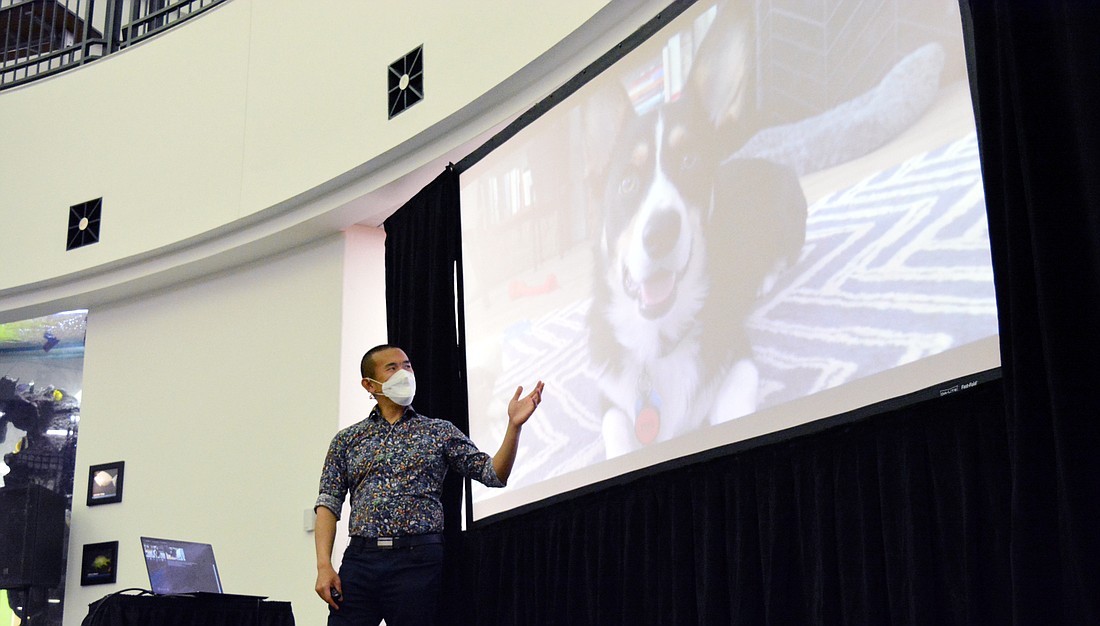- April 30, 2024
-
-
Loading

Loading

Is ice cold? Is the night black? Does body odor stink?
For author and science writer Ed Yong, the answer is: It depends on whom you ask. Or, more specifically, what kind of animal you ask.
That is the lesson in his book, “Immense World,” which he spoke about at the annual One Book One Community event held by Sarasota County Libraries March 1.
During his hourlong talk at Selby Library to a packed crowd of more than 350, Yong discussed research on how animals perceive the world and how it can expand humans’ understanding of it.
Yong gave several examples of how animals experience the environment around them, a term called “umwelt.” For example, manatees have a poor sense of sight, but, with whiskers covering their entire bodies, they have a highly sensitive sense of touch, which allows them to gather information on currents and water patterns that affect their survival.
“Understanding these things changes our understanding about what other animals are doing,” Yong said.

Dogs are another good, and familiar, example, Yong said. Although humans think about a walk’s purpose as primarily exercise and a way of getting from A to B, a dog’s purpose is completely different.
“We’ve all experienced a dog halting to a stop to intensely focus on a leaf or a patch of pavement,” Yong said. “What looks completely nondescript to the eyes is bursting with information to the nose.”
With long slits in the sides of their nose and a brain that’s hardwired to pick up and remember olfactory information, dogs are uniquely suited to prioritize smells, which makes their walks a journey of scents, not distance.
But every sensory strength comes with tradeoffs. Using the earth’s magnetic field, sea turtles can navigate through the oceans back to the beaches where they hatched. But this navigation only works over long distances. “They’d struggle to find your bathroom from your bedroom,” Yong said.
The same is true for humans, who have among the best vision in the animal world. Not only is it “really, really weird” for an animal to have two eyes on the front of its head, but the only animals with higher resolution vision are birds of prey.
The down side? “Our eyes really suck in the dark,” Yong said. Eyes can be high in acuity or sensitivity, never both.
Likewise, humans can’t see ultraviolet light, which means we see the world completely differently than a bee sees a flower or nocturnal animals see the night, which doesn't look black at all to them.
Understanding how other animals perceive the world not only expands our understanding of it, it also helps us see how we impact it.
Light pollution disrupts nocturnal animals’ ability to see and navigate in the dark. Environmental pollution plays tricks on animals’ sense of smell and chemical receptors. And noise pollution limits animals’ communication with one another, which makes it harder for everything from whales to songbirds to find mates.
These things aren’t just a pollution of the environment, Yong said, but a “pollution of disconnection” for humans, making us feel less part of the world around us.
There’s benefit for humans and nature if we can look outside our own experiences. “Thinking about how other animals sense the world brings us to our responsibility in it,” Yong said. “But the only way to really experience what another animal senses is through imagination.”